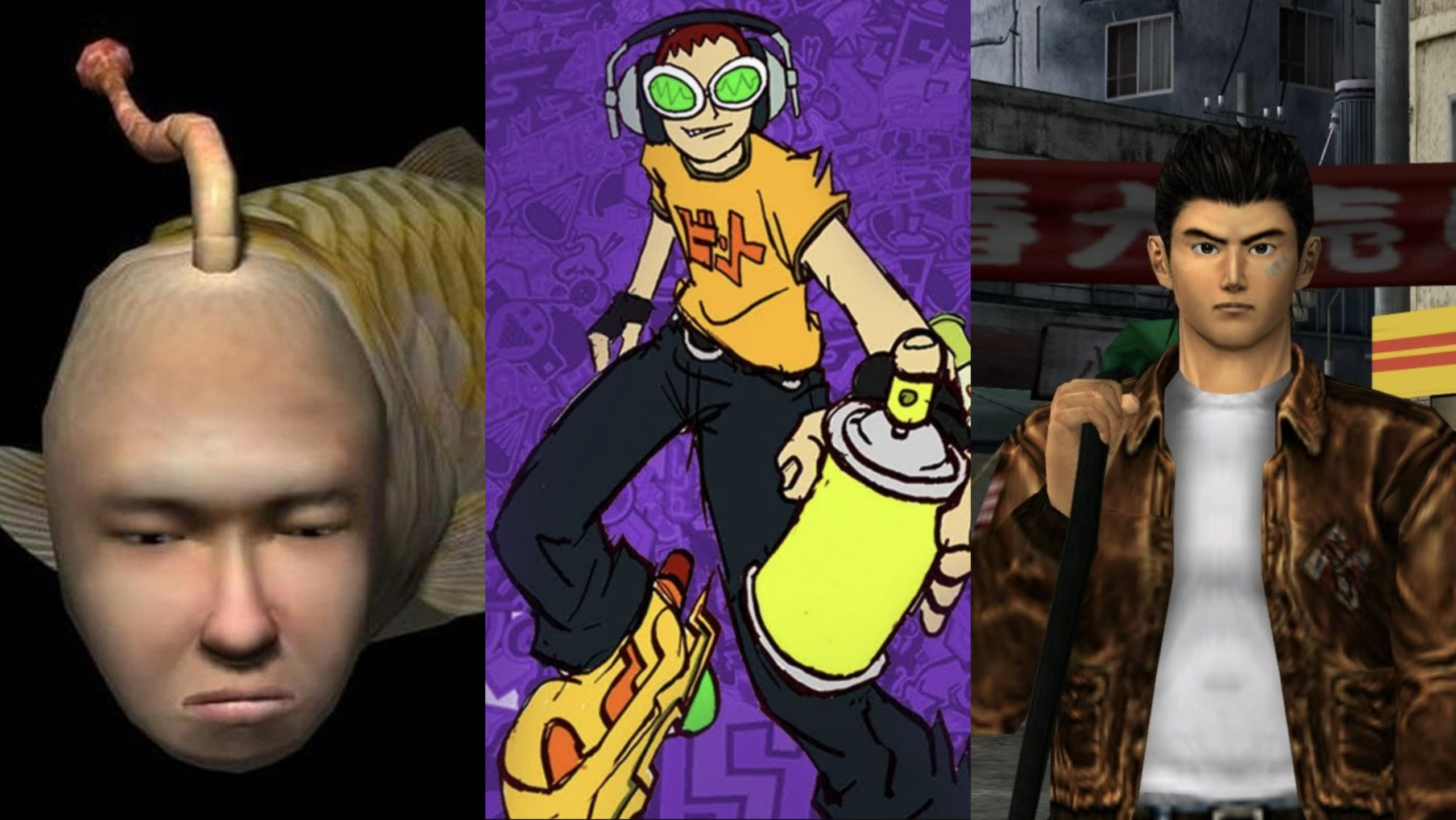The Sega Dreamcast made its Japanese debut just in time for Christmas 1998. It would take until September of 1999 for the console to reach North America, where fans welcomed it after roughly three years with the weakening PlayStation and the chunky Nintendo 64. Its fate would be a modern retelling of the myth of Icarus. The Dreamcast was a fifth-generation console loaded with gimmicks ahead of their time (like online capability, unique accessories, and a custom operating system that allowed arcade ports to run with perfect fidelity). It handled different graphical styles, like cel-shaded adventures and 3-D modeling, with ease. It could have been a revolution.
Instead, the Dreamcast would fail in less than two years and crash at the feet of the PlayStation 2. Yet it remains a remarkable system. Those of us lucky to still have an operational Dreamcast care for it, select spare TVs based on compatibility with it, and enjoy a slate of some of the most advanced games the turn of the century had to offer. Let’s put some of these revolutionary classics back in the spotlight.
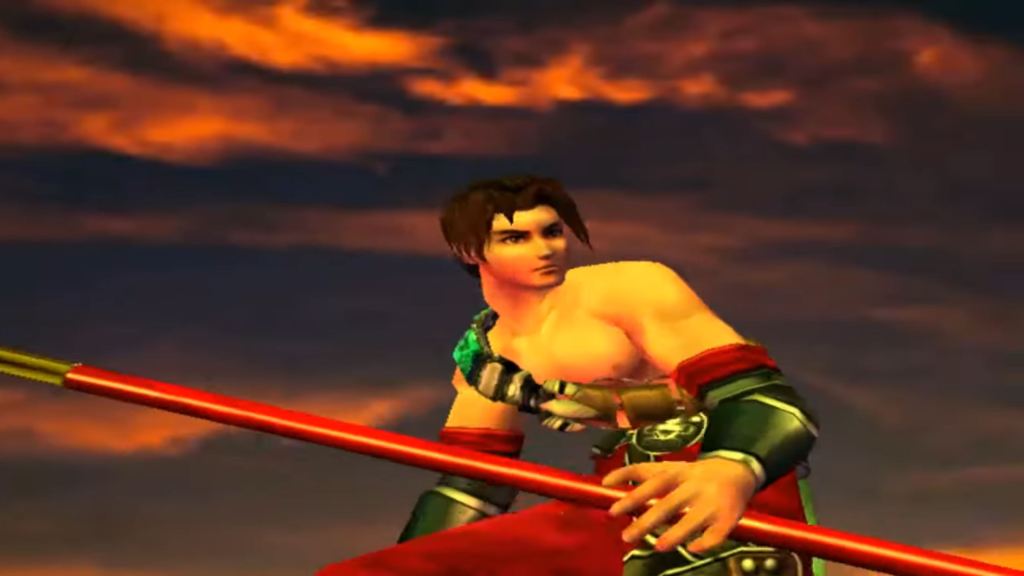
Soulcalibur
The Dreamcast revolutionized how we play fighting games at home with Soulcalibur. While some of Soulcalibur‘s basic ideas were obviously carried over from its spiritual predecessor, Soul Edge, this game’s brand new movement system allowed its roster of fantastical characters to dominate in all directions, Soulcalibur and its descendants boast the most fluid movement of any fighting franchise.
The game’s complex plot (an intricate saga about a blade so evil it exuded a Lovecraftian-level amount of control over its wielder) also raised the bar for storytelling in fighting games. Those who dove into this game solo still got to enjoy an incredible experience.
The Soulcalibur franchise has gone quiet since its sixth iteration in 2018, and it’s arguable that the later games relied too much on the allure of novelty characters such as Geralt of Rivia in VI and the no-longer-available Darth Vader in IV. Yet the original game endures, thanks to each character’s distinct fighting style, their legendary weapons, and their unique designs that are just as vibrant today as they were in 1999. From the arcade to our couches, Soulcalibur was the kind of port gaming previously only dreamed of.
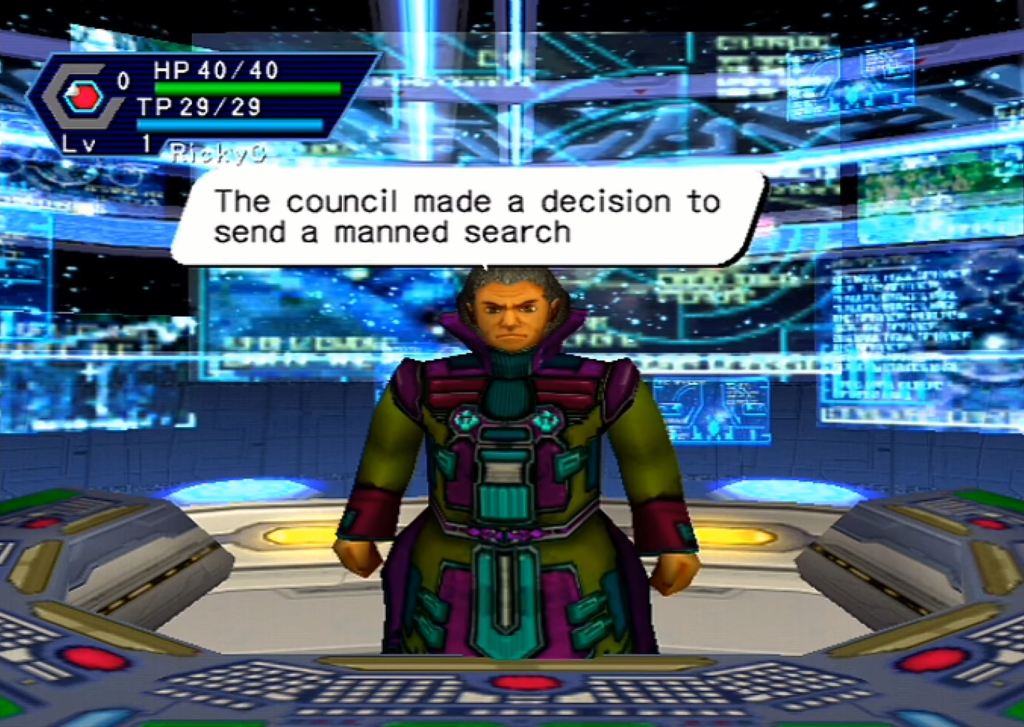
Phantasy Star Online
Today, it feels like so many games are chasing that MMO feeling, rendering the console landscape into a wasteland of “games-as-a-service” trying to retain our attention long enough to rifle our pockets. However, there was a time when that genre and its ideas were truly a novelty, especially for a generation of console gamers who could only dream of such experiences until Phantasy Star Online came along.
Phantasy Star Online used the Dreamcast’s incredible innovative built-in modem to dial you into an online world filled with other adventurers looking for loot. Online RPGs were already familiar to PC gamers, who grew up with text-based MUDs and early traditional MMOs, but Phantasy Star was fresh for reasons that go beyond the novelty of its platform.
Its streamlined gameplay loop demanded one more run to feed our serotonin, rushing through different biomes to find out what cool drops you’d get from the bosses. Imperfect but satisfying, Phantasy Star Online refined ideas no other console game had really even tried yet. But you don’t have to believe me. Private PC and Dreamcast servers for the game are still alive today, and loyal fans are still out there hunting for the right drop.
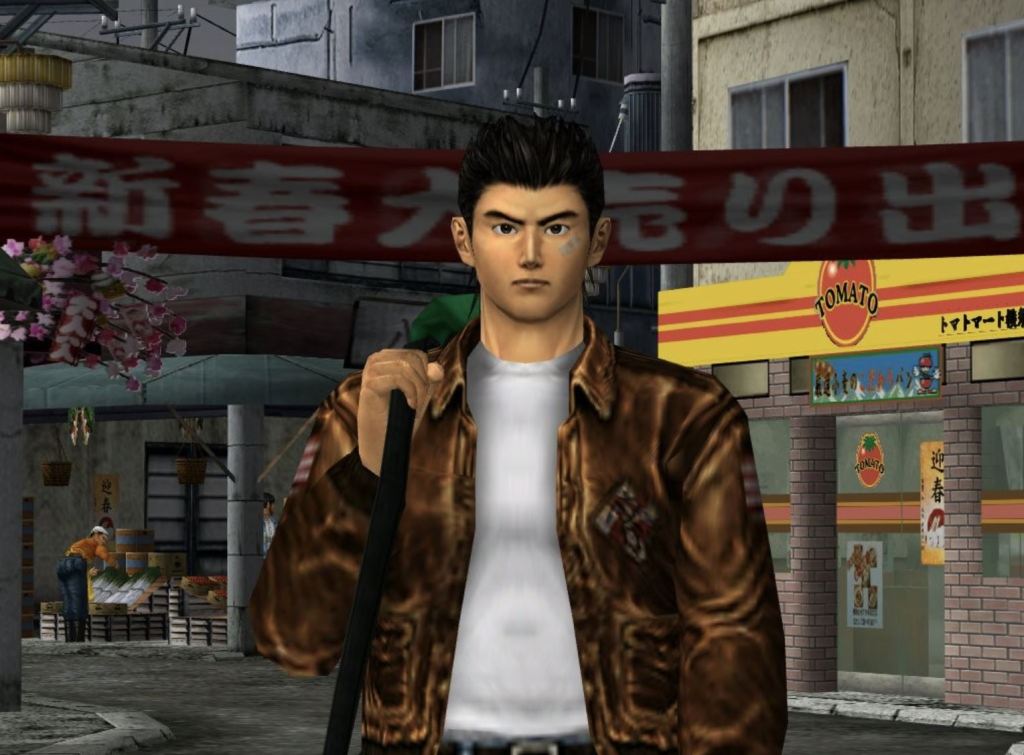
Shenmue
Shenmue may very well be the poster child for games ahead of their time.
It’s 1999, and proper open-world games won’t become standard for at least three more years. In Shenmue, though, the sprawling Japanese city of Yokosuka is laid bare for players to explore. Its NPCs follow individual schedules, the days pass with new events to discover, the weather regularly changes, and the city arcades offer full games and other diversions. It was like nothing else available at the time.
Shenmue‘s innovations extend beyond its open world, though. Before creator Yu Suzuki conceived of Shenmue, the idea of timed events already existed. However, Shenmue codified that tool, turning QTEs into an easy gimmick that pressured gamers into feeling like active participants in cinematic scenarios. Future blockbuster hits like Resident Evil 4 and God of War would turn to that tool for some of their most memorable moments.
While Shenmue never earned mainstream acclaim, its legacy remains. Most notably, Shenmue’s living city, and its vengeful hero, Ryo Hazuki, serve as the ancestors of the Yazuka franchise, Gacha capsule machines and all.

Seaman
It’s saddled with an off-putting name and centers on a creature that’s horrifying to look at, but Seaman (don’t say it) was a Tamagotchi unlike any other.
This life simulation game was controlled entirely by a microphone; a then-unique accessory bundled with the game. Leonard Nimoy’s voice guides players through the art of raising this strange new species, which means the game’s already bonkers experience can be enhanced by playing one of Nimoy’s albums while you explore this title’s many possibilities. May we suggest the “Ballad of Bilbo Baggins?”
The goal of the game is to muddle your way through nursing this … thing out of its parasitic stage until it turns into a fish with a face that, unfortunately, resembles Jeff Bezos. But you’re not done yet. There are several more stages to go before you can release this squamous horror into the wild to propagate more…sigh…Seamen. Look, there’s no way to not make this game sound weird, but from a technical standpoint, few other games available at the time boasted its ambition, its layers of tangled evolutionary puzzle intrigue, or even its unusual control scheme.
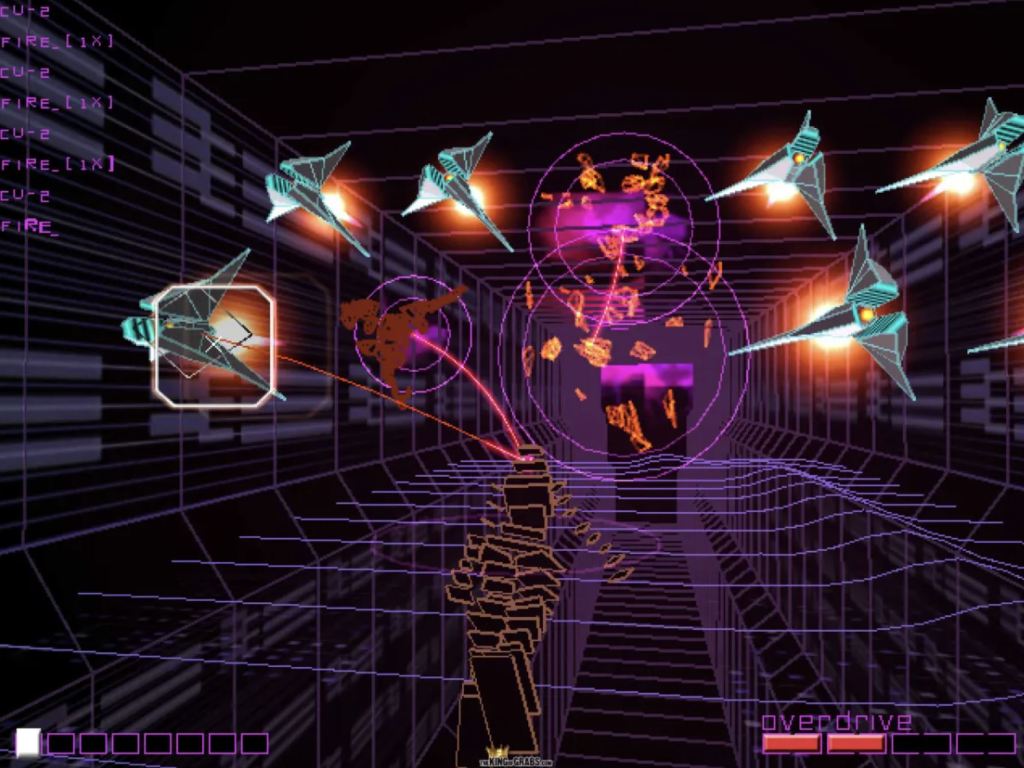
Rez
Sega may have published Rez simultaneously for Dreamcast and its killer, the PlayStation 2, but it’s clear this unique rhythm shooter was always meant to be the Dreamcast’s prize to showcase.
Ethereal and unusually calming for an on-rails shooter, Rez utilized enhanced vibration technology to help immerse the player in its world. The vibration works with its rave-techno score to build a trance-like state, letting you chill while saving the world from a rogue AI.
The result is a video game homage to Altered States: a film that also worked ahead of its time to mimic a psychedelic state in its viewers. It was a unique and powerful enough experience for this oddity to become a franchise. Rez survives in remakes and remasters, like Rez Infinite, and in the spiritual successor by the same director, Child of Eden. Though this achievement was shared with Sony and their less-unwieldy DualShock controllers, the Dreamcast version of Rez is still a technical and artistic accomplishment for a system not lacking in such accomplishments.
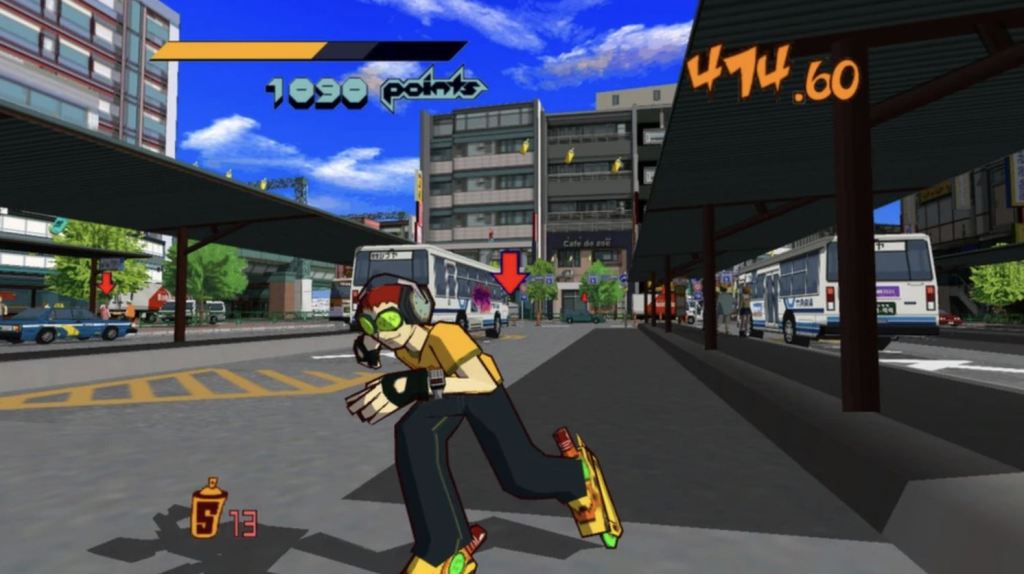
Jet Set Radio (Jet Grind Radio)
Strangely, it seems like 2002’s Jet Set Radio Future tends to get more credit for being one of those great games most people have forgotten about. A Japanese launch title for the unwieldy monolith that was the original Xbox, that sporty action game featured a slick, cel-shaded aesthetic and a vibrant soundtrack. Unfortunately, the Xbox’s struggles in Japan contributed to the game’s failure in that region. Then again, it didn’t do very well in North America either.
Yet, so much of what made Jet Set Future a future cult classic began in that game’s 2000 predecessor, Jet Set Radio. That game’s cartoon style and kickin’ soundtrack made for an unbeatable experience, showcasing what the underrated console could accomplish with a team focused on delivering their absolute best. It controls like a dream, allowing players to zip through twining streets, leaving graffiti tags to piss off their enemies. For gamers that think The World Ends With You is the best showcase of the bold Shibuya street style, know that there’s an ancestor worth meeting.
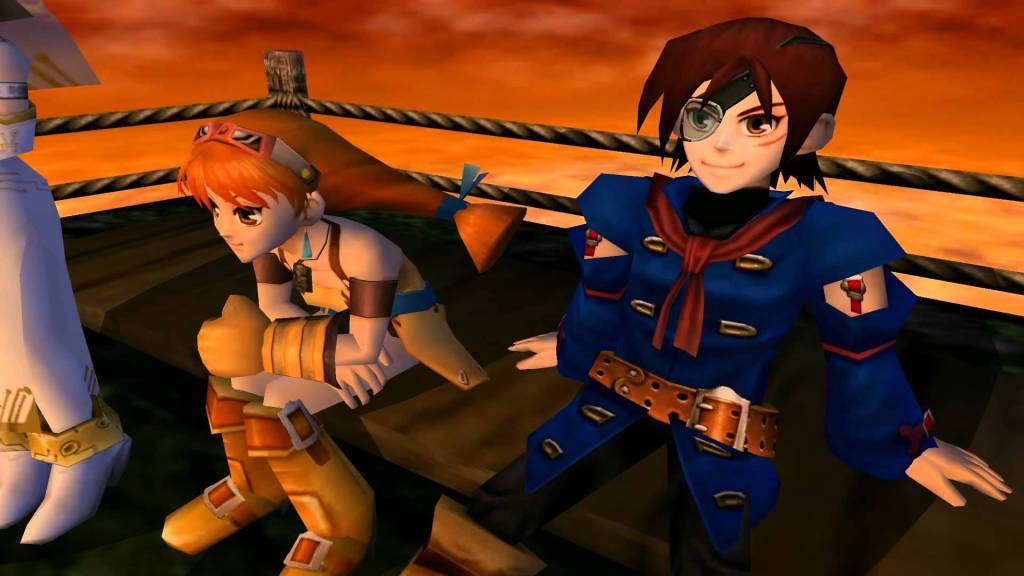
Skies of Arcadia
If, after hundreds of hours of Xenoblade Chronicles 3 and its predecessors, you’re still jonesing for more to explore, try Skies of Arcadia on a buddy’s working Dreamcast (or find the game’s oft-forgotten GameCube port). In terms of its gameplay and style, it feels like the spiritual cousin the Xeno games deserve.
Skies of Arcadia is a world of floating continents featuring a secret history of advanced technology turned apocalyptic. Naturally, history is about to repeat, and a young pirate and his eccentric crew get involved with powers and problems beyond their comprehension. That set-up is already pretty Xeno-y, but add in a surprisingly rich character recruitment system that makes your airship base feel ever livelier, and an enormous world to explore, and you’ll soon be begging for more. Of course, so much of the game’s brilliance can be traced back to the creativity of its producer, Rieko Kodoma. Kodama, who was also the artist who gave the Phantasy Star franchise its lush sci-fi aesthetic, tragically passed away this year. This game was her proudest achievement, and it’s still a gift to JRPG fans everywhere.
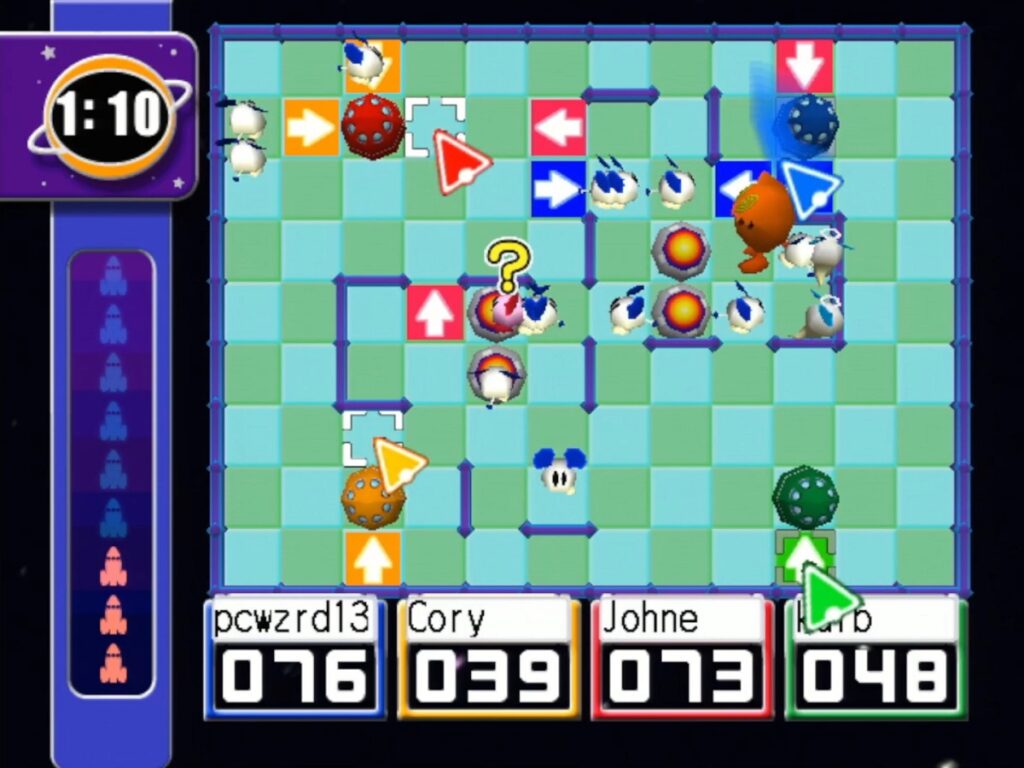
ChuChu Rocket!
Partially a trial run for the online functionality Phantasy Star Online would later rely on, and partially a way to ruin your friendships with the toss of a cat, ChuChu Rocket is still a frustratingly addictive puzzle game. Simple to play and adorable to look at, it’s also easy to suck at this game so hard you’ll hold a grudge about it for twenty years. And then play it again. And not improve at all.
It plays a little like Lemmings. The ChuChu mice run around witlessly until you set up paths for them with a simple set of arrow tiles. Unfortunately, there are also KapuKapu cats, and they’re out to ruin the ChuChus’ day. In multiplayer, the goal is to rescue as many mice as you can while shifting the cats into opposing sections. For a generation of console gamers, ChuChu Rocket! offered their first real taste of an online game that not only ran smoothly on some pretty basic technology but was incredibly fun to play. Like Phantasy Star, you can still enjoy this Dreamcast multiplayer experience on private servers today. Alternatively, you can always grab the GameBoy Advance remake (if you can find it).
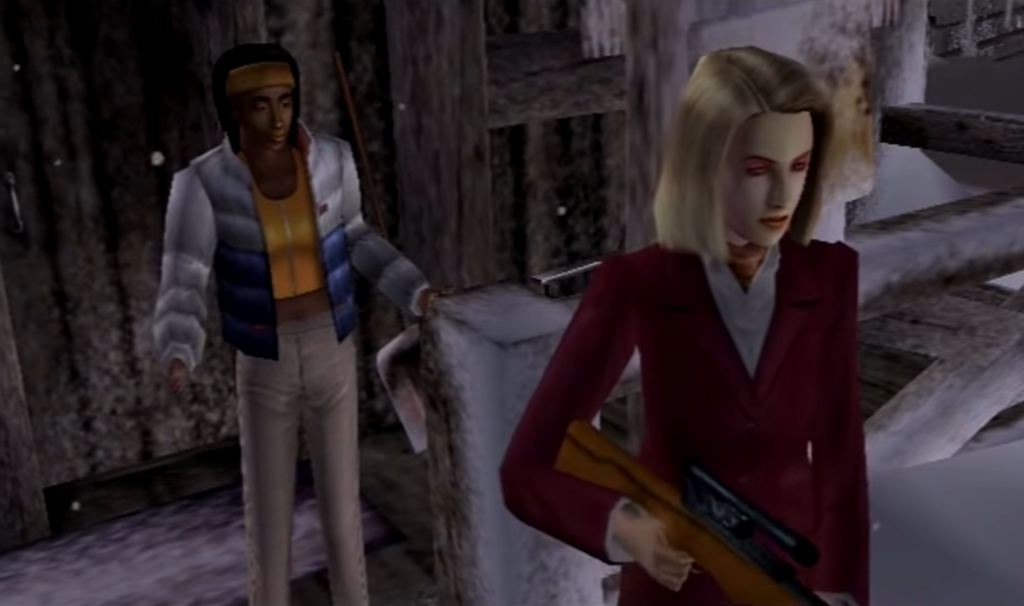
D2
It’s the turn of the century, and a visionary game designer has the idea to create a digital actor to star in multiple projects. No, it’s not Final Fantasy: The Spirits Within, and it’s not 2001. It was 1995, when Kenji Eno and his Warp gaming company introduced “Laura” in an interactive FMV horror game called D. Released on multiple platforms, including the Sega Genesis, it was a moderate success. In 1999, Laura arrived on the Dreamcast for D2 with a new story that fans of the Alan Wake universe might find compelling.
D2 is a survival game with multiple interesting tweaks. Laura needs to hunt to recover her health, and the game even keeps track of your hunting kills like a more traditional arcade hunting game. D2 also features a primitive camera mode, and plenty of Myst-like puzzle areas. Put it all together, and you have a cosmic horror experience with more than a few hints of John Carpenter’s The Thing. While D2‘s brand of cinematic scares and diverse gameplay is no longer unique, Eno’s games broke ground for creators like SWERY and Sam Lake, concept creator of the Alan Wake franchise.
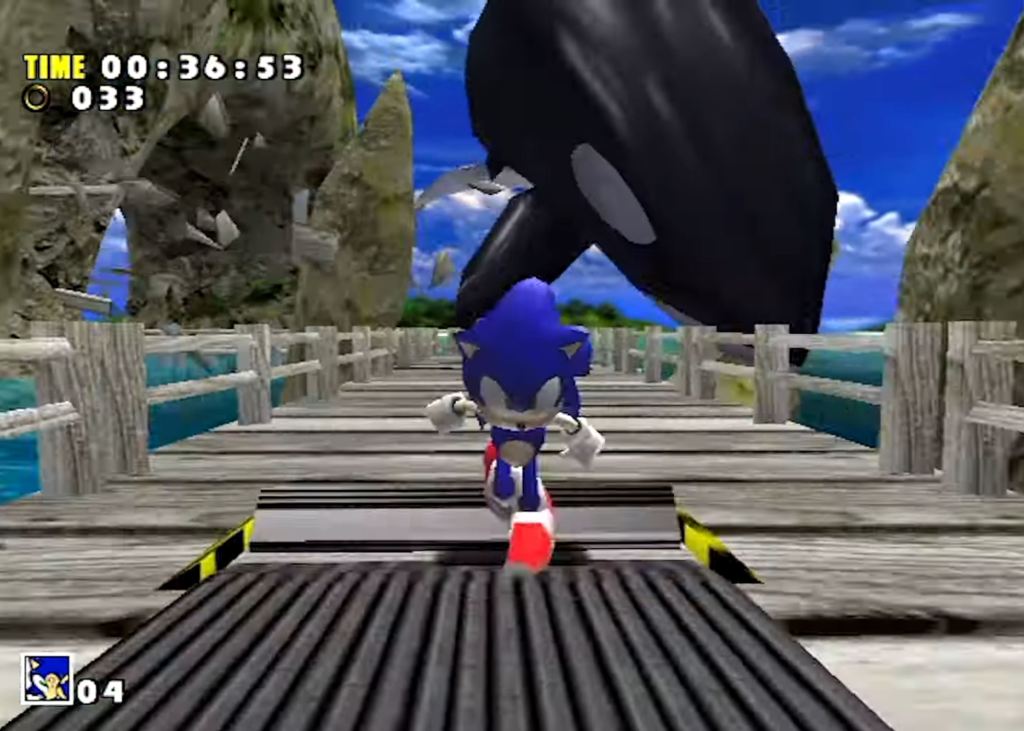
Sonic Adventure
It’s odd to honor a Sonic game for being ahead of its time. The franchise slammed into a ton of ring-dispatching roadblocks over the decades, and even Sonic Frontiers is barely okay. But we have two things to keep this speedy blue hedgehog beloved in our hearts. One is Ben Schwartz’s voice in a pair of damn good movies, and the other is the one time Sega actually nailed a fresh take on Sonic right out of the gate.
Sonic started life as an energetic 2D platformer anyone could get addicted to, quickly enshrining the little guy as Sega’s best-known mascot. Sonic Adventure scaled some of the series’ best ideas into 3D, while adding entirely new concepts like open-world hub zones, RPG elements, and a deeply distracting Chao virtual pet activity that turned the Dreamcast’s VMU memory cards into a Tamagotchi app. Maybe it wasn’t as revolutionary as Super Mario 64, but Sonic Adventure showed another path for 3D platformer games that other titles certainly followed closely even if Sega themselves did not. Let’s get that energy back, Sega.
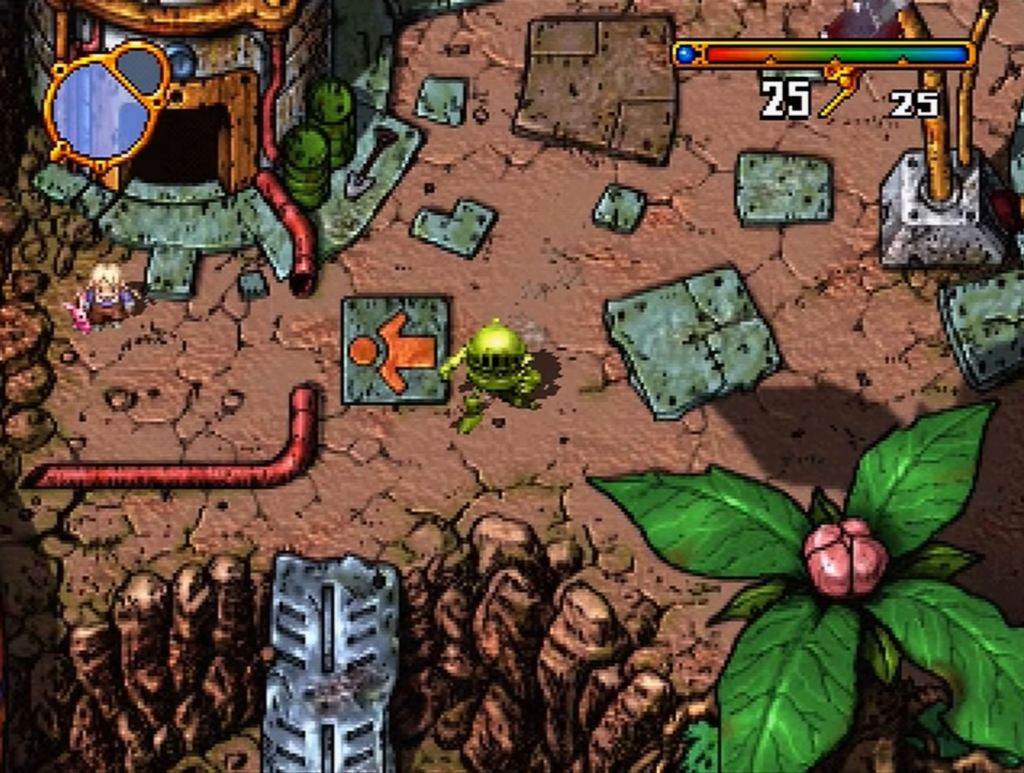
Elemental Gimmick Gear
The Nintendo Switch eShop is littered with the corpses of games proclaiming themselves to be the best Legend of Zelda experience you’ve had since the Wind Fish farted in his sleep. It’s a surefire way to sell a few extra copies. And yet, hidden away on old hardware, there are a few Zelda-like games that succeeded in echoing Link’s adventure but got no recognition for their efforts. This is the legend of Elemental Gimmick Gear: an action RPG with beautiful pixel art and tough 3D battles.
EGG fully embraced a sci-fi flavor, with a plot vaguely similar to the classic Crystalis. As the ruins of a distant technological past are explored, researchers find a man in deep cryogenic sleep. The advanced technology found with him is soon exploited across the world. At least it is until the guy wakes up and finds out some idiot touched the wrong button, and now the reborn tech has gone rampant. While EGG‘s gameplay is serviceably solid, it’s the beauty of the experience went ignored in an era where critics wanted more and better 3D games to stress their new generation systems. This game proved that great pixel art is not only immortal but can actually be enhanced by new technology in ways that aren’t always as obvious as they are in more cinematic titles.
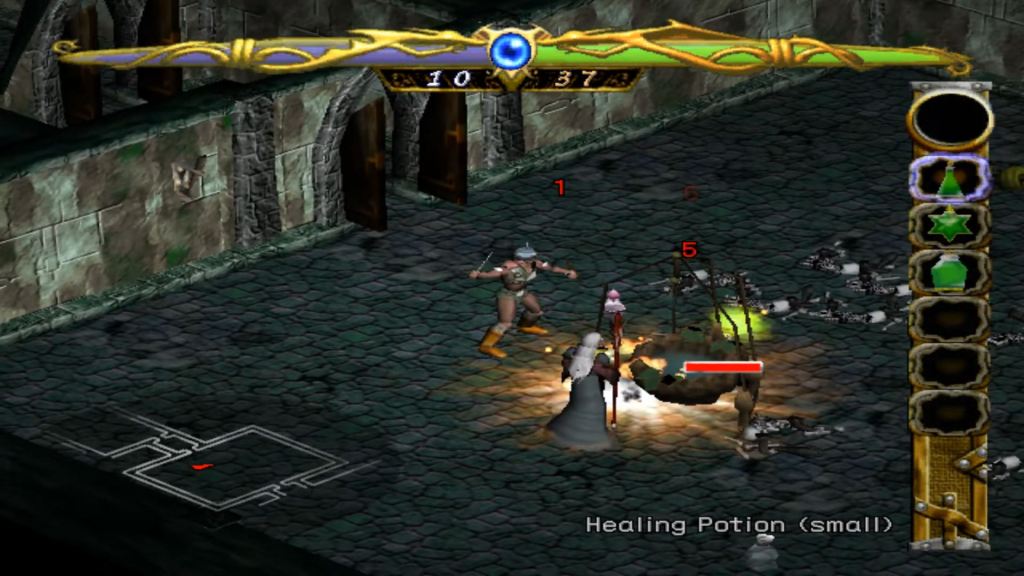
Record of Lodoss War: Advent of Cardice
Let’s go out on a curio. Deedlit in Wonder Labyrinth unlocked memories for old nerds, who binged the original Record of Lodoss War OVAs off grainy tapes back in the ‘90s. There’s not much like it in anime anymore, a pure fantasy epic with no Isekai, little fanservice, and the prettiest elf since Legolas. But Wonder Labyrinth wasn’t the only Lodoss War video game to make it to the US.
Advent of Cardice is a 2001 Diablo clone made by Neverland (the developer behind both the classic Lufia series and the recently revived Rune Factory franchise). Advent of Cardice doesn’t have much in common with its anime roots beyond some recognizable characters, but for console gamers let down by the 1998 PlayStation port of Diablo, it scratched the itch like no other console game at the time. Rune combos could create wild numbers when cutting down hordes of enemies, and your hard-knuckle crawl through grimy corridors lasted for dozens of hours of gameplay. It’s not really a “proper” Lodoss War game, all told, but it’s a hidden treasure that deserved some of the success an upcoming wave of Diablo console clones would receive.
